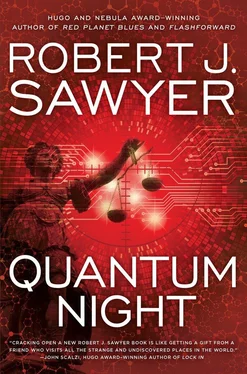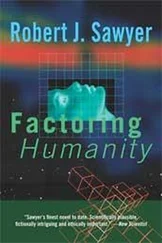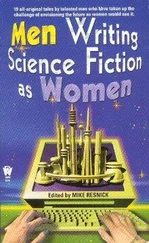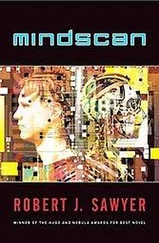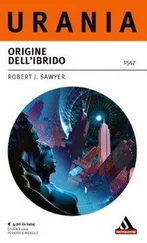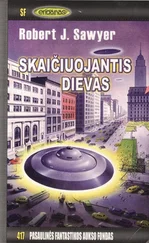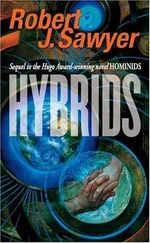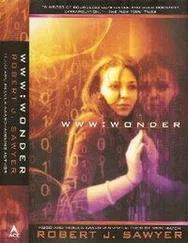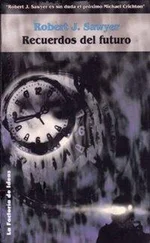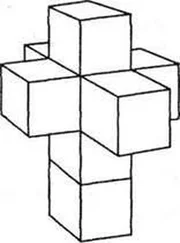“Exactly,” I said. “The average guy sees a difference not just in degree but in kind between Paul Bernardo and a surgeon who can dispassionately open up somebody’s chest. And he doesn’t see the connection between Jeffrey Dahmer and an avaricious bank president. And yet we keep telling him that they’re the same thing. Well, maybe in this instance, the laypeople are right. Maybe we actually are talking about two distinct phenomena.” I shrugged a little. “It doesn’t help that psychopathy—of either kind, I suppose—can manifest itself in so many different ways, thanks to differing genetics, upbringings, socioeconomic conditions, childhood abuse or lack thereof, and so on. There are twenty traits on the Hare Checklist, right? Each of which can be absent, weakly present, or strongly present, and you need a score of thirty or above to be diagnosed a psychopath. That means there must be thousands of different flavors of psychopathy.”
“Fourteen million, two hundred and seventy-nine thousand, four hundred and fifteen.”
I looked at her.
“Math’s my thing,” she said, flashing a radiant smile.
* * *
Two hundred kilometers…
* * *
“Okay, but if Q1s are p-zeds, and Q2s are psychopaths,” I said, “what does quantum-superposition state three correspond to?”
“Us?” said Kayla, throwing out an idea.
“What do you mean by ‘us’?”
“A person firing on all cylinders: a normal, fully conscious human being with the ability to reflect upon yourself, to think about whether what you’re doing is right or not. In other words a person with—”
“A conscience,” I said.
“Precisely. A conscience.”
Could it be that simple, I wondered? An additive effect? Stage one, with one of three electrons in superposition: basic functioning, but no awareness.
Stage two, with two of three electrons in superposition: the same basic functioning as before, but with self-awareness added on.
And stage three, with all three electrons in superposition: everything from stage one and everything from stage two, plus an extra layer—a degree of thoughtful introspection, a conscience—added on top.
“Consciousness with conscience…” I said.
I saw Kayla’s profile, illuminated now only by the dashboard lights, nod. “Makes sense, doesn’t it?”
“Oh! And it could be abbreviated C-W-C, right?”
In the dim light, I pantomimed writing the three letters in the air. “Conscious with conscience. I like that there’s a W in the middle, because there literally is a double you: two yous, the basic consciousness, and then a looking back on that consciousness, a self-reflection.”
“C-W-C,” she said. “Bit of a mouthful.”
I was reminded of Douglas Adams’s quip about WWW being the only abbreviation that had three times as many syllables as the thing it stood for. Still: “Only if you spell it out. If you say the initials as a word, C-W-C spells ‘quick.’ You know, like in bright or mentally agile: a quick mind, a quick wit…”
“Hmm,” she said.
“It’s like the Norm MacDonald bit about the Fantastic Four.”
She shot me a glance.
“Reed Richards is giving them their new names: ‘Sue, you’ll be The Invisible Woman. And Johnny, how cool is this? You’ll be The Human Torch. And, me, let’s call me Mr. Fantastic—yeah, that’s it. Oh, and Ben, you’ll be The Thing.’ Old Ben wasn’t too happy about that. ‘You get Mr. Fantastic and I get The Thing?’”
“Well,” said Kayla, “the p-zeds quite literally won’t care that we got a better name.”
“And the psychos?”
“Don’t tell them,” said Kayla. “Don’t make them angry. You wouldn’t like them when they’re angry.”
“Continued Marvel motif for the win,” I said, my heart beating faster.
* * *
Three hundred kilometers…
* * *
“But come on,” said Kayla. “I mean really. How could it possibly be true? How could most of the population be philosopher’s zombies?”
“Well, it’s like the Neanderthals, right?” I said. “They had bigger brains than us. But they were nothing but p-zeds. They made no art. They didn’t bury their dead with grave goods—implying they had no concept of an afterlife. They didn’t go in for bodily adornment: no makeup or jewelry, except near the end of their reign, and then that might well have been simple mimicry of us.”
“They made tools,” Kayla said.
“So do chimps and crows. Doesn’t mean there’s anyone inside having an interior monologue. And remember, the Neanderthals made essentially the same tools for 200,000 years: the Mousterian industry. They chipped stone choppers exactly the same way, with no innovation, no improvement. Never once, as far as we can tell, when a flint nodule broke in an odd way that might have been better did a Neanderthal tilt his head to one side and say, ‘Hmmm… isn’t that interesting? And what if I did this…’ Instead, he discarded any such nodule and just kept doing the same old thing without really being awake.”
“Caught knapping, so to speak.”
I’d heard it as “Caught napping,” and she must have realized that. She took her hands off the steering wheel long enough to act out whacking two stones together. “You know, knapping—with a k.”
“I can see why I fell for you all those years ago,” I said, grinning, as the headlamp from an approaching car bathed our faces in light…
* * *
Four hundred kilometers…
* * *
“The problem with leaving philosophical zombies to the philosophers is that they take things to the extreme,” I said. “Camp A—David Chalmers is in it—proposes a creature that is quark-for-quark identical to a normal person but, despite being precisely the same physically, has no consciousness, and yet somehow behaves indistinguishably from an entity that is conscious. It’s an argument designed to show that consciousness is something non-physical.
“Camp B—Daniel Dennett is in it—says Chalmers and others who say zombie behavior would be indistinguishable from normal behavior are simply wrong in asserting that consciousness is something that can be separated out like that. Dennett would say consciousness is not a single thing, but a combination of capacities.”
“Right,” said Kayla.
“And Chalmers postulates one world entirely filled with fully conscious beings, and another, completely separate world entirely filled with zombies—‘Zombieworld,’ as he calls it.”
“Okay.”
“But I’m with Dennett; I’ve always had a problem with the Zombieworld postulate. For a thought experiment in a classroom, it’s fine. But in real life? In actuality? I just don’t see how you can get a viable society as complex as our own that consists solely of nonconscious entities. Without at least some conscious beings for the nonconscious ones to emulate, you’d get—well, you’d get Neanderthals: a stagnant civilization, with nothing changing. No, you need some truly conscious people; you need quicks. We Q3s come up with new ideas, and they’re emulated over and over by the Q1s.”
“But if the Q1s are behaviorally different like that—however subtly—then they aren’t really philosopher’s zombies, not in the sense Chalmers means.”
“Yeah, okay. So let’s make p-zed a full acronym to distinguish our zombies from his. P-Z-E-D: ‘philosophical zombies exhibiting differences.’ And ours really are philosophical, right? ‘Philosophy’ means ‘lover of wisdom,’ and our p-zeds do love wisdom, in the sense of being attracted to it because they don’t have any of their own. But when an idea comes along—”
Читать дальше
